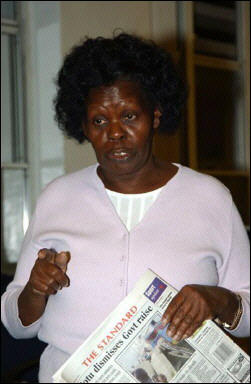Featured
- Get link
- X
- Other Apps
William Ruto's Claims of Economic Success in Kenya Debunked: A Comprehensive Analysis
However, a closer examination reveals a stark contrast between his rhetoric and the grim reality faced by everyday Kenyans. Despite Ruto's claims of economic salvation, evidence suggests that his policies have exacerbated the hardships endured by the populace, casting doubt on his leadership and economic stewardship.
The Dollar Price Fluctuation: A Superficial Indicator
Ruto pointed to a temporary drop in the price of the US dollar against the Kenyan shilling as evidence of his economic prowess. While fluctuations in currency exchange rates are common and can be influenced by various factors, they do not necessarily reflect the overall health of an economy. Moreover, Ruto's fixation on this single metric fails to address deeper structural issues plaguing Kenya's economy.
Fuel Price Reductions: A Fleeting Respite
The President also highlighted a marginal decrease in fuel prices as a sign of economic improvement. However, such reductions are often short-lived and offer little solace to Kenyans grappling with the daily cost of living. Furthermore, relying on periodic adjustments by regulatory authorities to signal economic progress is a tenuous proposition at best, as it fails to address systemic issues driving inflation and poverty.
Tax Hikes and Debt Management: Misguided Strategies
Ruto defended his government's decision to increase taxes and introduce new levies under the guise of debt control. While prudent fiscal management is crucial for long-term economic stability, the indiscriminate imposition of burdensome taxes disproportionately impacts low-income earners and stifles economic growth. Furthermore, Ruto's assertion that local interventions and revenue generation can supplant borrowing ignores the need for sustainable development strategies and responsible debt management practices.
Contradictory Actions: Borrowing vs Debt Repayment
Despite Ruto's rhetoric about reducing debt levels, Kenya continues to rely heavily on external financing, including sizable disbursements from international institutions such as the World Bank. Additionally, the government's decision to repurchase a portion of its Eurobond debt contradicts Ruto's purported commitment to debt reduction. This inconsistency underscores a lack of cohesive economic planning and raises questions about the effectiveness of Ruto's policies in achieving tangible results.
Widespread Economic Hardship: A Reality Check
Despite Ruto's claims of economic salvation, the lived experiences of ordinary Kenyans tell a different story. High unemployment rates, rising inflation, and persistent poverty paint a bleak picture of the economic landscape under Ruto's leadership. Moreover, recent projections of modest GDP growth fail to address the underlying structural challenges facing the Kenyan economy, further undermining Ruto's assertions of success.
Conclusion: Ruto's Economic Narrative Falls Short
In light of this evidence, it is clear that William Ruto's claims of rescuing Kenya's economy ring hollow in the face of widespread suffering and economic hardship. While superficial indicators may paint a rosy picture, a closer examination reveals the inadequacy of Ruto's strategies in addressing systemic issues and improving the lives of ordinary citizens.
Moving forward, a comprehensive reassessment of economic priorities and strategies is essential to chart a more equitable and sustainable path for Kenya's future.
- Get link
- X
- Other Apps
Popular Posts

Who’s Nailin’ Paylin?
- Get link
- X
- Other Apps

A selection of Kenyan women
- Get link
- X
- Other Apps
.jpeg)
.jpeg)
.jpeg)
.jpeg)
.jpeg)


Comments